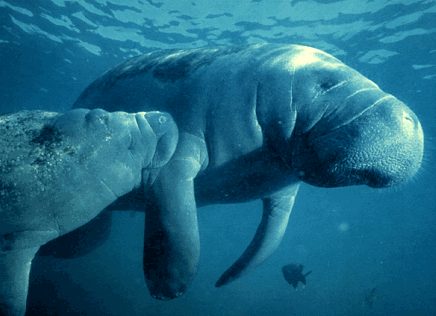BUSINESS STEWARDSHIP SPEAKER SERIES
MINUTES FOR JULY, 25th 2006
CORPORATIONS LEVERAGING RESOURCES FOR COASTAL CONSERVATION
Business Stewardship PanelCMRC Executive Director Joel Banslaben welcomed all to the kick-off of the Business Stewardship Speaker Series at 8:30 AM on July 25th. The topic for the event, Corporations Leveraging Resources for Coastal Conservation was introduced. The seminar was hosted by the Hudson River Foundation at 17 Battery Place, Manhattan, NY.
Yigal Gelb – Program Director, NYC AudubonMr. Gelb discussed the Harbor Herons Monitoring partnership and how the collaboration between Fuji Film and NYC Audubon allowed the organization to overcome the challenge of determining nesting and feeding routes of several wading birds. The partnership provided NYC Audubon with airtime in the Fuji Film blimp to track four species while in flight.
Yigal provided background on the Harbor Herons project and the need for aerial monitoring. The Harbor Herons consist of several species including the Black Crown Night Heron, Great Egret, Snowy Egret and Glossy Ibis. NYC Audubon is trying to determine if birds from other areas are using different feeding grounds and are feeding sites equally important?
The results of the partnership provided Audubon with important information about nesting and feeding grounds. They found that four separate nesting/feeding systems exist in Pelham Bay Park, NJ Meadowlands, Jamaica Bay and Staten Island. Furthermore they found that feeding grounds are necessary and birds cannot use other wetlands.
Yigal also provided insight into how the partnership with Fuji Film came about. The idea came from an Audubon member and staff then followed up with a contact that could arrange conversation between the two organizations. NYC Audubon provided details of their monitoring plans and the need for the aerial resources and Fuji Film agreed to assist with the project.
Alison Johnson – Credit Suisse FoundationMs. Johnson described recent trends in corporate philanthropy and volunteerism. Credit Suisse is a large company with 5000 employees locally that provide human resources for volunteer projects in their local communities. Larger corporations are often looking to donate resources to an effort to enhance public image and provide workers with connection to their local community.
Alison discussed how Credit Suisse recently revisited its corporate philanthropy strategic plan. After evaluation, Credit Suisse decided to direct their corporate philanthropy toward community participation and volunteerism. Credit Suisse now only works with organizations that can provide volunteer opportunities for their employees and fit within the three tenets of Credit Suisse’s corporate giving strategy:
o Internal Culture Building - Focus on building relationships between employees and community giving where employees initiate the relationship with local organizations.
o Team Building - more money is given when teams of employees are involved, as opposed to old system of individual donation matching.
o Social Responsibility and Community Development - focus on local communities.
Credit Suisse also has a Mini Grant Program that provides “Dollars for Doers,” where the work of an employee is rewarded with a donation. Ms. Johnson also mentioned that Credit Suisse is looking into involvement with local environmental issues and suggested that organizations look into Business for Social Responsibility (BSR), Committee to Encourage Corporate Philanthropy (CECP), the Foundation Center, New York Regional Association of Grantmakers (NYRAG) and the Corporate Volunteer Network of NY (CVNY).
Terry Kellogg – Executive Director, One Percent for the PlanetMr. Kellogg described One Percent’s effort to create partnerships for sustainable business and healthy ecosystems and discussed the trends in our society where individuals and companies that are outsiders to policy-making often effect the greatest change. One Percent is working to address how business can change their model from “how can we be the most sustainable company” to “how can we effect the greatest change while also protecting business interests.”
Terry provided some background on the organization which was started by Yvon Chouinard and Craig Matthews when they realized their companies were thriving because of their conservation focus. Member companies give one percent of their sales revenues to environmental organizations and enter into a license agreement to use logo and promote business stewardship. One Percent certifies member’s donations and maintains a database of approved recipients while assisting to maintain relationships between member organizations and businesses.
One Percent has grown from around 100 members to nearly 400 in the past year and includes companies from 36 states and 16 nations. Mr. Kellogg highlighted that each business provides one percent of gross revenues and that this is a very significant contribution for most companies. However, more often than not businesses are benefiting as a result due to consumers being increasingly aware of corporate practices before investing financially.
The meeting was adjourned at 10:00 AM. The next Business Stewardship Speaker Series event on Retail Business and Conservation Opportunities will take place in October 2006.
Read more about the Business Stewardship Initiative:
http://www.thecmrc.org/prog-hbp-bsp.asp
 Sponsored by Brooklyn Brewery, Outside Magazine, Rough Guides, Patagonia, Jurlique Soho, and many more!
Sponsored by Brooklyn Brewery, Outside Magazine, Rough Guides, Patagonia, Jurlique Soho, and many more!





























